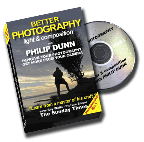It’s a great feeling for a photography coach when his students produce great pictures. It means the teaching and training has really paid off. Maria Falconer has been coming to me for tuition for almost two years now. This year she came for the second time to Menorca, and, as I am always looking for new ways to vary the itinerary, I took the group of photographers to the horse trotting races in Mahon.
Photo by Maria Falconer
This is an exciting, colourful and action-packed evening. Picture opportunities abound, both on the track and behind the scenes in the stables.
The main exercise for the event was to practice panning – capturing the action by following the horses in the viewfinder as they raced past. This sounds easy, but it needs a lot of practise to press the button at exactly the right moment in order capture a fast moving subject. The secret of a well-panned shot is to get the subject in the viewfinder as it approaches, follow it carefully and press the shutter button as the horses race by. But, most important of all, you simply must ‘follow through’ and keep the camera going in the direction of your subject AFTER you have taken the picture. A bit like a good golf stroke.
Maria photographed the riders as they came round the bend in the circuit with horses and carts tightly bunched together. It is a picture absolutely brimming with action and it has caught the very essence of speed. It is an impressionistic view of the race and you can almost hear the horses hooves pounding, the crack of the riders whip and the shouts of the spectators. Slight over exposure has created a ‘high-key' lighting effect and added an extra surreal effect to the picture
Maria used a Canon EOS 5D with a shutter speed of 1/20sec and an aperture of f10 The ISO was set at 1250. That slow shutter speed has created 'blur' and a tremendous feeling of movement.
If you want to capture the action by 'freezing' the movement, you will need very fast shutter speed for a fast-moving subject like these horses. I'll talk about 'freezing' action in my next post.
Philip Dunn
http://www.photoactive.co.uk/



No comments:
Post a Comment